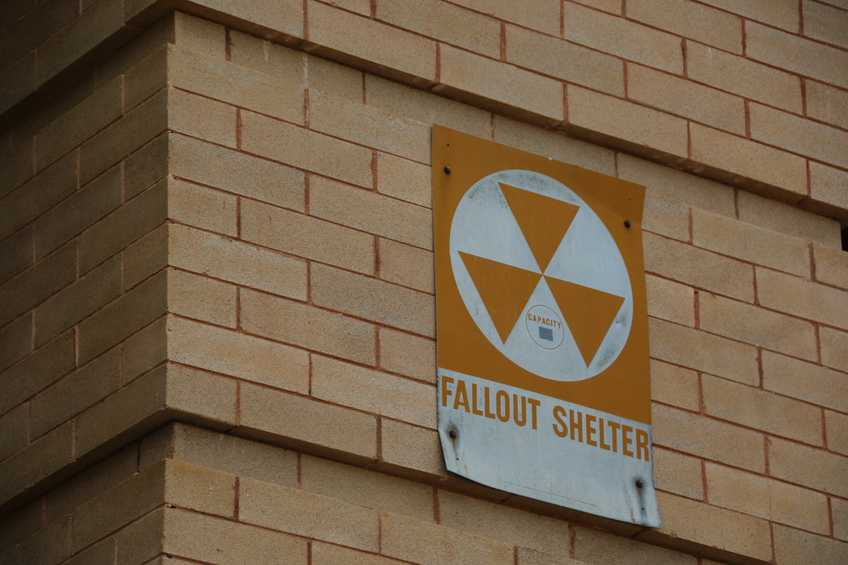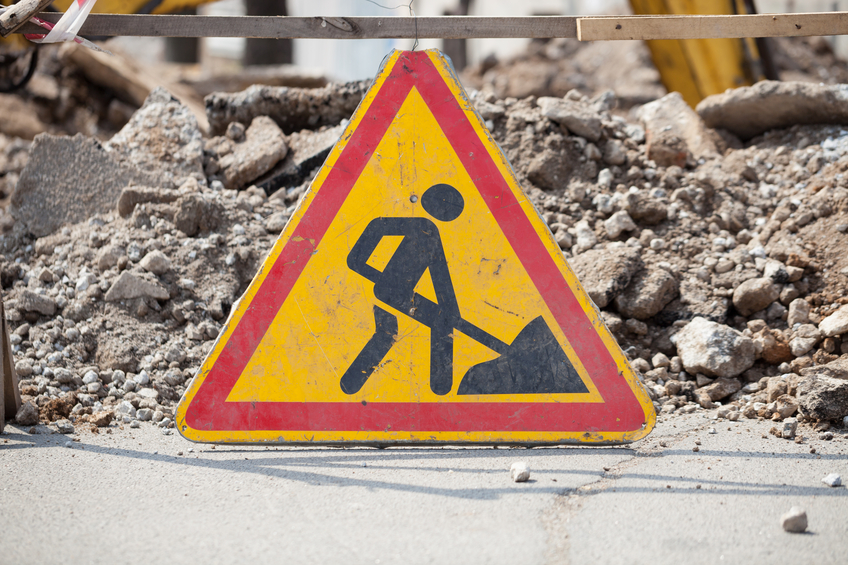Pennsylvania Construction Safety and Ethics 24 PDH Discount Package 3
Introduction to Radiation (Y03-004)
Protecting Building Environments from Airborne CBR Attacks (F03-003)
Protecting Construction Workers in Confined Spaces (Y03-002)
Respirable Crystalline Silica Standard for Construction (C09-005)
Determining Negligence in Engineering Failures (LE2-012)

This online engineering PDH course provides guidance on the various explosive blast mitigation measures as well as chemical, biological and radiological (CBR) protective measures. It discusses explosion effects, building damage, injuries, levels of protection, stand-off distance, and predicting blast loads and effects. It also presents protective measures and actions to safeguard the occupants of a building from CBR threats based on guidance from the CDC/NIOSH and the DOD. These measures include evacuation, sheltering in place, personal protective equipment, air filtration and pressurization, and exhausting and purging, as well as CBR detection.
This 4 PDH online course is applicable to engineers, planners, architects, landscape designers, construction and operations personnel, security and law enforcement agents, as well as consultants and contractors to gain a better understanding in identifying and implementing explosive blast and CBR protective measures against potential terrorist attacks.
This PE continuing education course is intended to provide you with the following specific knowledge and skills:
- Understanding the blast process and effects (chemical reaction, blast shockwave, incident and reflected pressures, building damage and injuries)
- Estimating the minimum standoff distance based on a given design threat
- Predicting blast loads and effects
- Implementing various design protective measures for CBR mitigation
In this professional engineering CEU course, you need to review Chapter 4 “Explosive Blast” and Chapter 5 “Chemical, Biological, and Radiological Measures” of the FEMA Publication tilted, “Mitigating Potential Terrorist Attacks Against Buildings” (FEMA 426).
Upon successful completion of the quiz, print your Certificate of Completion instantly. (Note: if you are paying by check or money order, you will be able to print it after we receive your payment.) For your convenience, we will also email it to you. Please note that you can log in to your account at any time to access and print your Certificate of Completion.

This online engineering PDH course provides an overview of the types of radiation, the health effects due to exposure and the way it is regulated.
Radiation has always been present and is all around us. Life has evolved in a world containing significant levels of ionizing radiation. We are also exposed to man-made radiation from sources such as medical treatments and activities involving radioactive material.
The health effects of radiation are well understood. Since the early 20th century, radiation’s effects have been studied in depth, in both the laboratory and among human populations. Because of the known health risks of radiation, it must be carefully used and strictly controlled. A balance must be struck between radiation’s societal benefits and the risks that radiation poses to people, health and the environment.
The Canadian Nuclear Safety Commission (CNSC) regulates the use of nuclear energy and materials to protect the health, safety and security of Canadians and the environment; and to implement Canada's international commitments on the peaceful use of nuclear energy. It also sets dose limits to prevent workers and the public from excessive radiation exposure.
This 3 PDH online course is applicable to safety engineers and professionals who are interested in learning more about nuclear safety.
This PE continuing education course is intended to provide you with the following specific knowledge and skills:
- Understanding the definitions of atoms, isotopes and radioisotopes
- Familiarizing with the types of radiation: non-ionizing and ionizing radiation
- Knowing the natural and man-made sources of ionizing radiation
- Understanding the health effects of radiation exposure and how it causes cancer
- Familiarizing with the epidemiological evidence of the effect of the radiation exposure
- Identifying the radiation dose limits and the typical radiation doses produced by natural and man-made sources
- Learning the types of radiation doses: absorbed, equivalent and effective dose
- Familiarizing with the rules regulating radiation
Upon successful completion of the quiz, print your Certificate of Completion instantly. (Note: if you are paying by check or money order, you will be able to print it after we receive your payment.) For your convenience, we will also email it to you. Please note that you can log in to your account at any time to access and print your Certificate of Completion.

This online engineering PDH course provides guidance on such protective measures that a building owner, manager or engineer can implement without undue delay to enhance occupant protection from an airborne chemical, biological, or radiological (CBR) attack.
The likelihood of a specific building being targeted for terrorist activity is generally difficult to predict. As such, there is no specific formula that will determine a certain building's level of risk. Building owners, managers or engineers must make their own decisions about how to reduce their building's risk to airborne chemical, biological, or radiological (CBR) attack.
These decisions may be aided by a comprehensive building security assessment to identify the appropriate protective measures which will help transform buildings into less attractive targets. These protective measures include, but are not limited to, increasing the difficulty of introducing a CBR agent, increasing the ability to detect terrorists before they carry out an intended release, and incorporating plans and procedures to mitigate the effects of a CBR release.
This 3 PDH online course is applicable to building owners, facility engineers and managers, and maintenance personnel of public, private, and governmental buildings, including offices, laboratories, hospitals, retail facilities, schools, transportation terminals, and public venues (for example, sports arenas, malls, coliseums), who are interested in gaining a better understanding of enhancing the resilience of a building.
This PE continuing education course is intended to provide you with the following specific knowledge and skills:
- Understanding buildings and their systems
- Identifying physical security requirements
- Evaluating HVAC systems and their vulnerability to CBR agents
- Implementing maintenance, administration and training measures
In this professional engineering CEU course, you need to review the course document titled "Protecting Building Environments from Airborne Chemical, Biological or Radiological Attacks" prepared by the National Institute for Occupational Safety and Health (NIOSH), Department of Health and Human Services, May 2002.
Upon successful completion of the quiz, print your Certificate of Completion instantly. (Note: if you are paying by check or money order, you will be able to print it after we receive your payment.) For your convenience, we will also email it to you. Please note that you can log in to your account at any time to access and print your Certificate of Completion.

This online engineering PDH course provides guidance on the Confined Spaces standard that applies to construction work performed in confined spaces. It addresses the most common issues that employers face and provides sufficient detail to serve as a useful compliance guide.
A confined space is a space whose configuration and/or contents may present special dangers not found in normal work areas. Confined spaces may be poorly ventilated and, as a result, contain insufficient oxygen or hazardous levels of toxic gases. Working in a tight space can prevent a worker from keeping a safe distance from mechanical and electrical hazards in the space. Fumes from flammable liquids in a poorly ventilated area can reach explosive levels.
Such hazards endanger both the workers in the confined space and others who become exposed to the hazards when they attempt to rescue injured workers. Therefore, employers must evaluate all confined spaces in which their employees work to determine whether hazards exist and whether the work to be done has the potential to create such hazards in the future.
This 3 PDH online course is applicable to engineers, architects, managers and contractors whose duties involve work in confined spaces and are interested in learning about the proper approach to safety while working in compliance with the Confined Spaces standard.
This PE continuing education course is intended to provide you with the following specific knowledge and skills:
- Familiarizing with confined and permit spaces
- Gaining a general overview of the Confined Spaces standard’s requirements
- Learning about employer responsibilities and worker training
- Understanding the content of the permit space program
- Learning about the alternate procedures for certain permit spaces
- Understanding the responsibilities of entrants, attendants and entry supervisors
- Exploring different rescue and emergency services
Upon successful completion of the quiz, print your Certificate of Completion instantly. (Note: if you are paying by check or money order, you will be able to print it after we receive your payment.) For your convenience, we will also email it to you. Please note that you can log in to your account at any time to access and print your Certificate of Completion.

This online engineering PDH course provides an overview of the Occupational Safety and Health Administration’s (OSHA) Respirable Crystalline Silica Standard for Construction.
Crystalline silica is a common mineral found in many naturally occurring and man-made materials used at construction sites. Materials like sand, concrete, brick, block, stone and mortar contain crystalline silica. Amorphous silica, such as silica gel, is not crystalline silica. Respirable crystalline silica – very small particles typically at least 100 times smaller than ordinary sand found on beaches or playgrounds – is generated by high-energy operations like cutting, sawing, grinding, drilling and crushing stone, rock, concrete, brick, block and mortar, or when abrasive blasting with sand.
Construction workers exposed to respirable crystalline silica are at increased risk of developing serious adverse health effects including silicosis, lung cancer, chronic obstructive pulmonary disease, and kidney disease. This course describes the steps that employers are required to take to protect employees in construction from the hazards associated with exposure to respirable crystalline silica. This course provides guidance only, and does not alter or determine compliance responsibilities, which are laid out in OSHA standards and the Occupational Safety and Health Act.
This 9 PDH online course is intended for safety and health engineers, construction workers and others looking to better understand OSHA’s Respirable Crystalline Silica standard for construction.
This PE continuing education course is intended to provide you with the following specific knowledge and skills:
- Gaining general information about respirable crystalline silica
- Familiarizing with the scope and definition of the standard
- Learning about the specified exposure control methods and the alternative exposure control methods
- Understanding several sections of the standard such as: respiratory protection, housekeeping, written exposure control plan, medical surveillance, communication of hazards, and recordkeeping
Upon successful completion of the quiz, print your Certificate of Completion instantly. (Note: if you are paying by check or money order, you will be able to print it after we receive your payment.) For your convenience, we will also email it to you. Please note that you can log in to your account at any time to access and print your Certificate of Completion.

This engineering online PDH course will establish conditions under which, when an engineering failure has occurred, it can be attributed to negligence.
Five causes of failure are proposed: negligence, rare failure mode, overlooked failure mode, new (previously unrecognized) failure mode, and incorrect assessment of a known risk. Negligence is the only cause that involves failing in an ethical duty. These concepts are illustrated with five case studies of failures ranging from gross negligence to absolutely unforeseeable events: 1) the Great Boston Molasses Flood of 1919, for which a new possible cause was identified 95 years later (2014); 2) a building collapse in Bangladesh in which over 1,000 people died—one of the worst structural engineering disasters in history; 3) a meteorite strike of a private residence; 4) the crash of the British-French Concorde supersonic airliner, caused by an unlikely tire blow-out; and 5) radiation overdoses received by patients treated by the Thorac-25 medical linear accelerator, caused by errors in the software controlling the machine.
The 2 PDH online course is intended for engineers concerned with ethical behavior in engineering practice.
This PE continuing education course is intended to provide you with the following specific knowledge and skills:
- Understanding the definitions of negligence and standard of care
- Relating safety to risk
- Knowing the principle of Knightian uncertainty
- Avoiding the retrospective fallacy in accident investigations
- Avoiding the fallacy, in accident investigations, of assuming perfect engineering practice
- Using the results of failure investigations appropriately
- Being aware of the negative effects of punishment on learning from accidents
- Categorizing the general causes of engineering failures
Upon successful completion of the quiz, print your Certificate of Completion instantly. (Note: if you are paying by check or money order, you will be able to print it after we receive your payment.) For your convenience, we will also email it to you. Please note that you can log in to your account at any time to access and print your Certificate of Completion.